Infant stars, like those recently identified near the supermassive black hole at the center of our galaxy, are surrounded by a swirling disk of dust and gas. In this artist’s conception of an infant solar system, the young star pulls material from its surroundings into a rotating disk (right) and generates outflowing jets of material (left).
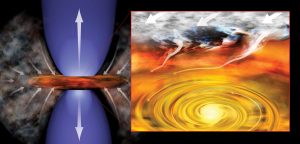
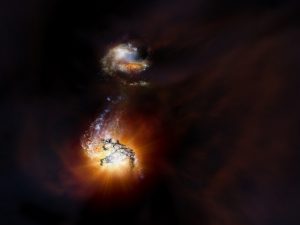
A Starbursting Merger in the Early Universe
Artist impression of two starbursting galaxies beginning to merge in the early universe.
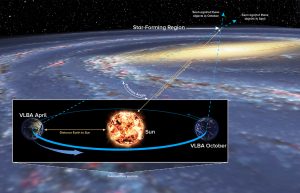
The Parallax Technique
The parallax technique determines distance by measuring the angle of apparent shift in an object’s position, as seen from opposite sides of Earth’s orbit around the Sun. Using this method, astronomers were able to directly measure the distance to a region on the far side of our Milky Way Galaxy, past the Galaxy’s center.
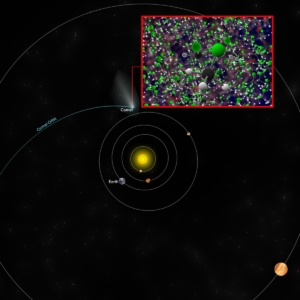
Methyl Chloride in Comet 67P/C-G
Approximate location of comet 67P/C-G when the Rosetta space probe discovered traces of methyl chloride — the same molecule detected by ALMA around the IRAS 16293-2422 star-forming region — along with other molecules.

VLBA Global Locations
Artist’s conception of the Very Long Baseline Array (VLBA), a continent-wide radio telescope system. The VLBA is an interferometer consisting of 10 identical antennas on transcontinental baselines up to 8000 km (Mauna Kea, Hawaii to St. Croix, Virgin Islands). The VLBA is controlled remotely from the Science Operations Center in Socorro, New Mexico. Each VLBA station consists of a 25 m antenna and an adjacent control building. The received signals are amplified, digitized, and recorded on fast, high capacity recorders. The recorded data are sent from the individual VLBA stations to the correlator in Socorro.
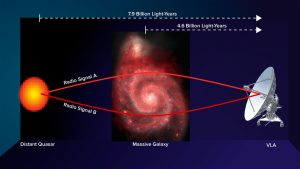
Measuring Magnetic Fields
Artist’s conception of gravitational lens arrangement that allowed astronomers to measure a galaxy’s magnetic field. Magnetic fields affect radio waves that travel through them. Analysis of the VLA images showed a significant difference between the two gravitationally-lensed images in how the waves’ polarization was changed. That means, the scientists said, that the different regions in the intervening galaxy affected the waves differently.





